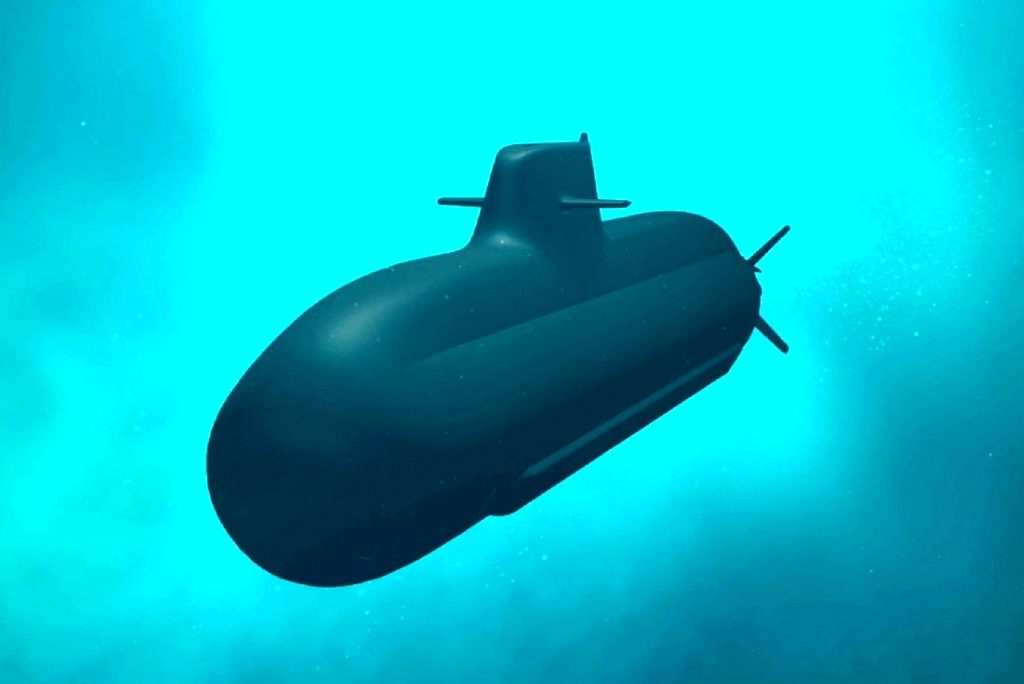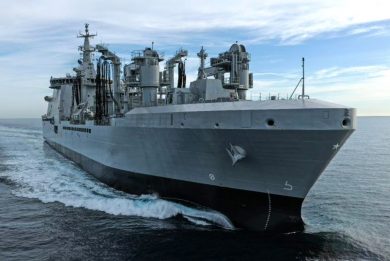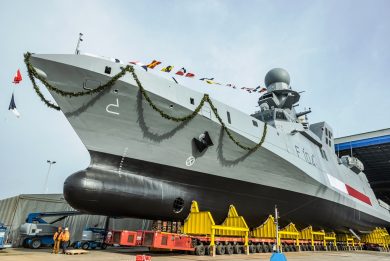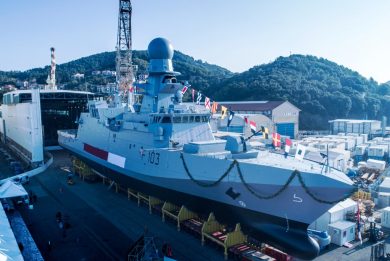
Fincantieri underwater manned and unmanned platforms
With a century-deep heritage and long-standing experience on modern underwater platforms, Fincantieri has developed a strong expertise, production capabilities and a resilient national supply network in this sector, making the company a highly competitive player on the international arena
“With an industry-leading manufacturing capability – centred on the Muggiano shipyard (La Spezia) for the submarine segment – supported by over 70 dedicated engineers and 90 operators, and encompassing research and development, design, system integration and support, all built around a strong and largely Italian-controlled supply chain, Fincantieri is well positioned to serve both national interests and international markets with agility and resilience,” Andrea Savino, VP Unconventional Underwater Solutions Development at Fincantieri, explained.
Three complementary platforms were presented to concretely showcase the Fincantieri’s capabilities in the manned and unmanned underwater shipbuilding segment: the U212 NFS (Near Future Submarine), the S800 and the Large Displacement Autonomous Unmanned Vehicle (LDAUV).
“Additionally, to meet every customer’s need, for small unmanned underwater vehicles we are collaborating with Graal Tech, ensuring that our underwater offering spans from advanced conventional submarines to cutting-edge small UW drones,” Savino highlighted.
U212 NFS

Based on the joint German-Italian partnership launched in 1996 and the submarine programme developed by TKMS and Fincantieri – which delivered four U212A submarines to the Italian Navy in two batches, built by Fincantieri with the support of a joint supply chain – the Italian MoD decided to develop and build an enhanced version. This new platform features an entirely new combat system with a strong national technological and industrial content, led by Fincantieri and Leonardo. The overall investment for the program amounts to € 2.7 billion and covers four submarines, in-service support, logistics and training assets.
“The U212 NFS platform marks a major step forward in submarine development. With an overall length of 59 metres and surface displacement of approximately 1,600 tonnes, it features an air independent propulsion (AIP) with lithium-ion batteries and an advanced combat system. The platform also benefits from enhanced hydrodynamic and unsurpassed stealthiness, ranging from acoustic to magnetic domain, achieved through the use of non-magnetic steel for the hull and magnetically compensated machineries,” Savino explained. “As the prime contractor, we are leading the programme introducing cutting-edge innovations, including the lithium-based battery system developed and produced in Italy, making us a front-runner in Europe in this field.” The latter was developed for the U212 NFS programme by Fincantieri in collaboration with FIB/FAAM and Power4Future (P4F), the joint venture between Fincantieri SI and Faist Electronics, with the crucial support of CETENA, Fincantieri’s research and consultancy centre in the naval and maritime field. “This technology increases underwater endurance while reducing maintenance requirements.”
Additional key improvements include the new generation combat system with a cyber resilient command management system by Leonardo as well as advanced sonar systems with a towed array and electronic warfare suites. The platform is also equipped with non-penetrating masts (except for the attack mast). “An electric hoistable masts suite, replacing the traditional hydraulic one, is installed on the platform, supporting a suite of sensors and communication equipment.”
The U212 NFS is equipped with the advanced Black Shark Advanced (BSA) heavyweight torpedo by WASS Submarine Systems (part of Fincantieri Group) and is designed to be equipped in the future with long-range, deep-strike cruise missiles and mines, significantly expanding its offensive capabilities. All together, these enhancements enable the submarine to cover a wide range of missions, including anti-submarine warfare, intelligence gathering, covert mining and special forces support, thanks to the capability to carry swimmer delivery vehicles (SDVs) or shelter for other payloads, in addition to the future management of tethered and autonomous underwater unmanned systems.
“Already under production, the U212 NFS represents the future backbone of Italy’s underwater fleet, and potentially of any top-tier navy. The first submarine will be delivered in 2029, with three more entering service by 2032. Moreover, in line with the Italian Navy’s expectations, we are already working on an evolved version for two additional units, to be fully designed and built in Italy,” Savino added.
Beyond the national programme, Fincantieri is involved in different export campaigns, targeting markets in Europe, Asia-Pacific and the Middle East. As highlighted by Fincantieri CEO Pierroberto Folgiero during the Q1 2025 conference call, “the company is pursuing multiple opportunities. We have made a specific announcement regarding the Philippines – where we are partnering with TKMS – and we are at the same time also involved in Poland, Greece and Indonesia.” He also mentioned ongoing prospects in the Middle East, without disclosing further details.
“The first international success could materialize as early as 2026,” Folgiero stated during the Underwater Investor Day presentation on the U212 NFS platform. Among the most advanced export prospects is the Polish Ministry of Defence’s programme for two to three advanced submarines. The Polish Procurement Agency has already been briefed and visited the U212 NFS production site at the Fincantieri Muggiano shipyard during a bilateral defence and industrial meeting.
“A compact, next-generation submarine, designed for agile and multi-mission operations in both coastal and open waters, the S800had already been the subject of a preliminary study commissioned by the Italian Navy, through OCCAR NFS Programme Division. It is set to offer outstanding flexibility across a wide range of mission profiles, from intelligence, surveillance reconnaissance, to supporting special forces deployment operations, making it an ideal solution for both medium-to-large sized navies,” Savino highlighted.
S800

“Purpose-built for agility, the S800 is perfect in very shallow waters and narrow choke points. What it truly sets it apart is its integration with unmanned systems such as remotely operated vehicles (ROV) or unmanned underwater vehicles (UUV) and, above all, its modular design, which allows for a rapid reconfiguration based on mission requirements. This is a capability that very few countries have, and even fewer can develop independently,” the Fincantieri representative noted.
“Typically, submarines or naval vessels are usually designed and built to accommodate a specific payload. To install new sensors or weapon systems, costly and time-consuming mid-life updates or refitting activities are often required. With the S800, we aim to change this paradigm by designing a platform capable of hosting a wide array of payloads, from heavyweight to lightweight torpedo tubes, to dry deck shelters, enabling the deployment of SDVs or UUVs for special forces operations. This approach represents a significant shift in terms of innovation and flexibility, offering future integration of external payloads without the need of extensive and expensive redesign,” he continued.
Renderings presented during the event showed an evolved 51 meters long design featuring greater flexibility and modularity than previous iterations. While no propulsion details were disclosed, it is expected to adopt an advanced diesel-electric configuration centred on the new lithium-ion batteries developed for the U212NFS programme. The forward section of the hull featured four upper-positioned heavyweight torpedoes (HWT) tubes, capable of launching not only torpedoes, but also underwater vehicles, such as ROVs, U/AUVs. The central-rear section showed two additional modular HWT launchers positioned on the upper hull section near the sail. Though not entirely clear in the renderings, the rear of the sail appeared to include a connecting chamber designed to house special force operators and equipment within a dry dock shelter or on a sled, deployable from behind the submarine’s sail for SDVs or UUVs.
Large Displacement AUV (LDAUV)

“A modular autonomous system designed for transportation and deployment from both surface and underwater platforms, the Large Displacement Autonomous Underwater Vehicle (LDAUV) offers a high degree of discretion and operational flexibility. It is primarily intended to enhance both maritime situational awareness, and underwater situational awareness, to monitor critical undersea infrastructures and to conduct covert data collection operations in very shallow waters,” Savino explained.
“Autonomous systems are no longer a future concept, they are a current operational reality. The LDUAV is Fincantieri’s answer to this shift. It will enhance and strengthen the organic capabilities of submarines, enabling cooperative missions between larger and smaller platforms, and contributing to the creation of a networked underwater environment. Moreover, it will replace conventional submarines in performing specific tasks in hazardous areas of interest, thereby reducing risks to the crew.” Thanks to its flexible and modular architecture, the LDAUV can be equipped with additional battery packs to extend mission endurance, as well as different kinds of payloads according to mission requirements.
While no further technical details were disclosed on the modular design, the renderings showed a square-section hull approximately the length of a U212 sail, with flexible internal space designed to accommodate a variety of payloads based on mission requirements, including weapon systems. Propulsion is expected to rely on Lithium-ion batteries, a technology already developed by Italian industry.
“We are not just building submarines, we are shaping the future of underwater operations. By combining our solid industrial expertise and capabilities with bold innovation, we continue to serve as a trusted partner for navies and customers worldwide,” Savino concluded.
Photos and images courtesy Fincantieri



